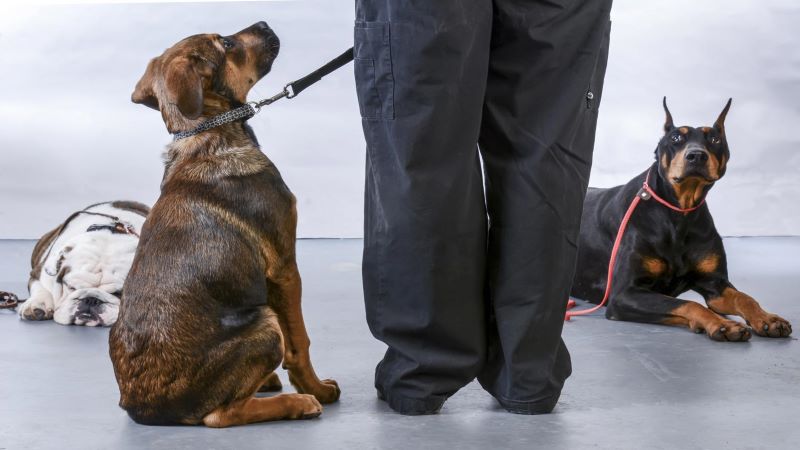Dog training can be tricky, unless you know the ins and outs and are prepared for the ups and downs. I happen to know an obedience school drop-out who is one of the most well-behaved dogs on the planet, so rest assured there is no “right” formula, and all dogs respond to training differently. The important things to remember are that dogs actually like routine and if you remain firm and consistent, your dog will respond accordingly. Below, we’ll outline the why, the when, and the where of dog training.
Why train my dog?
Well, for starters you can read our blog, Top Five Reasons to Train Your Dog. The most important rationale for training is safety, for you and for your dog. Training your dog to wait when you open the front door can save his life. Petfinder’s blog post 8 Great Skills to Teach Your Newly Adopted Dog recommends you, “Build a release command like “OK” to release him through the door. You can do this for the front door, getting in or out of the car and going into the pet store.” Training your dog can also ensure your family and especially little ones will be safe when they interact with him. We trained our dog to wait for a simple command, “OK,” before she took a treat from our hand, or began eating her meal. Now our four-year old can give her a treat without us worrying about her nipping his fingers. She waits for the command, then gently takes the treat from his hand.
When should I start training my dog?
Healthy puppies can begin training and socialization as early as seven weeks of age. Traditional school of thought was that puppies should receive a full series of vaccines before formal training began, but animal behaviorists and veterinarians now believe the benefits of training at a young age outweigh the risks of illness. According to the American Veterinary Society of Animal Behavior, ''In general, puppies can start socialization classes as early as 7-8 weeks of age. Puppies should receive a minimum of one set of vaccines at least 7 days prior to the first class and a first deworming. They should be kept up to date on all vaccines throughout the class.''
Where should I train my dog?
Formal training in a group setting can be beneficial to your dog as it encourages positive interaction with other dogs. But be careful not to push your dog too hard in class. In the feature The Vets Will See You Now in the April 2017 Real Simple Magazine, trainer Mikkel Becker points to research that shows taking play breaks during training “has been shown to increase a dog’s ability to retain information.” Veterinarian Gayle O’Konski mentions the importance of practicing at home as well as in class.
You shouldn’t underestimate the power of training in your day to day interactions with your dog. Dog 101: How to Train Your Dog points out that “Every interaction that you have with your puppy is a learning opportunity.” From teaching your dog to wait quietly for the “OK” command before diving into his dinner to encouraging good manners when new friends come over, each moment presents an opportunity to reinforce positive behaviors and correct any negative ones. We mention consistency and praise as two of the biggies in our blog, Five Dog Training Tips. Dogs are naturally people pleasers, and when they know you are happy with them, they are much more likely to want to continue behaving well.
Invest in your pet's health
How will you train your pooch? Get started today. After all, a tired dog is a happy dog, and training your dog gives him a sense of purpose, direction and routine. While you're investing in your dog's health with training, also look into pet insurance as a way to safeguard against unexpected vet bills for accidents and illnesses! Get a quote today.

